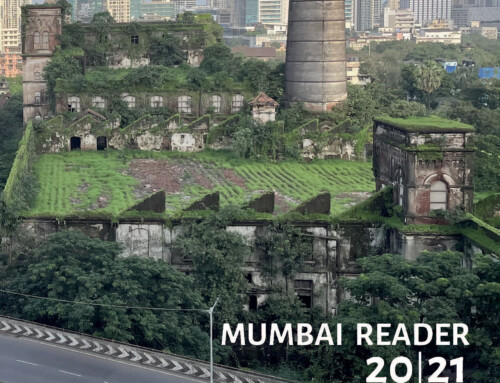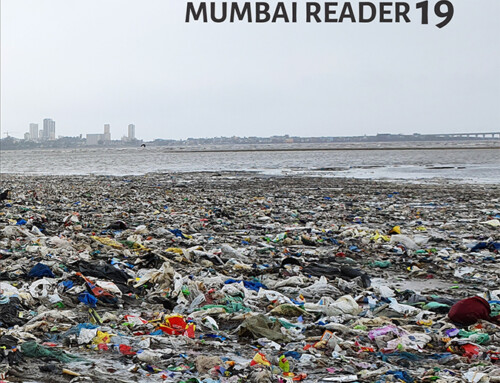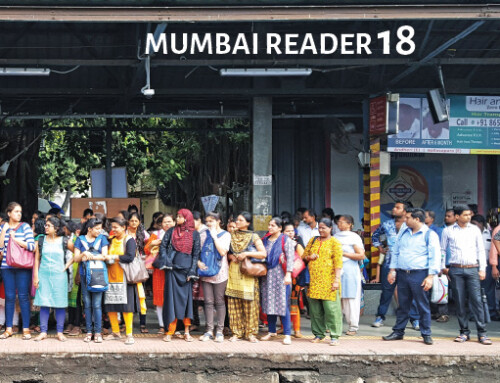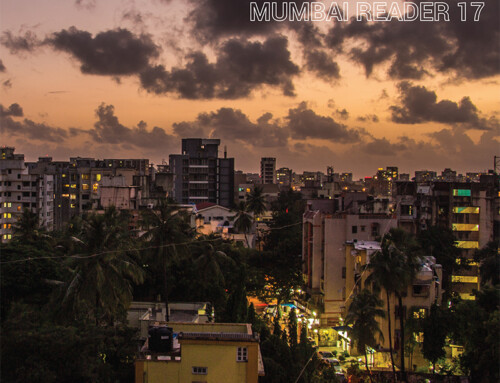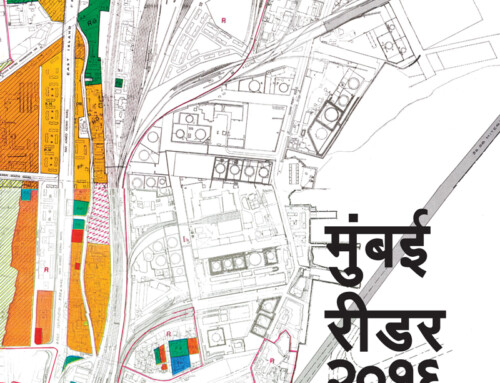Project Description

Mumbai Reader 08
Mumbai Reader’08 is available for reference and purchase at UDRI Resource Centre.
PREFACE
An urban area with a population of 22.7 million, Mumbai is forecast to stretch to an even more ungovernable 25 million before the close of the next decade. More than 60% of the population inhabit less than 8% of land, thriving in desperate physical, social and economic conditions.
The city transforms almost instantly into intangible domains which in the absence of intercession makes future policy response superfluous almost instantly. Conceived in such dynamical pandemonium, the Mumbai Reader is a research collective addressing the lack of literature on urbanism within the city. As a catalyst, the Mumbai Reader seeks to enable a contextual analysis of the city through spatial and literary understanding: reportage of existing or contemporary understandings and also an exploration into new paradigms for urban cognisance. Establishing that understanding prevalent illogic is an efficient trigger for effective interventions and policy alteration, the reader is intended to be an annual reference for problems, potentials and promise in the study of urban societies in Mumbai.
By 2014, the planning authorities will have devised a Development Plan which the city will enact over the coming years which is a classical identification and demarcations of reservations.
Modern planning represents a comprehensive drift from this regime and takes on the structure of channelized agenda and a sensibility to understanding urban processes and environments which are influenced by extraneous factors. In 2008, the Urban Design Research Institute initiated ‘open-equitable-efficient’, a research project that in consonance with the Mumbai Reader would rouse public imagination to the democratisation of urban planning. The UDRI is committed to understanding tactics and complex local dynamics which are crucial to development within the city. With prioritisation of disciplines, the project is accumulating a knowledge base and professional consultancy on housing, health, education, environment, open space, water, energy, transportation, livelihood and governance.
With such exponents as a medium and extensive urban policy review the aim of the reader is to inform the planning process and yield bearings as a determinant in planning within the metropolitan region. Drawing together perspectives from varied spheres of influence, written or visual this narrative regards the probability of informed opinion as an invaluable research probe. Through a much larger conglomeration of citizen action groups the Urban Design Research Institute is inclined towards the institution of virtuous participatory planning as an initiative to establishing cross disciplinary dialogue with policy makers. The Mumbai Reader additionally chronicles key events in the city’s memory, their proceedings and consequences recorded through newsprint.
With changing perspectives on urban life and an imminent development plan, never before has the challenge to not only understand this incomprehensible metropolis but also influence and determine policy been more urgent.
This work is licensed under a Creative Commons Attribution-NonCommercial-NoDerivatives 4.0 International License.
Attribution-NonCommercial-NoDerivs
CC BY-NC-ND
TABLE OF CONTENTS
- Frothing Urbanisms – Discussing Some Urban Conditions in Contemporary India
- Shifting Cities Urban Restructuring in Mumbai
- Urban Restructuring, Issues and Challenges
- After the crisis, do we still want to make Mumbai a world financial centre?
- Gendering of the Culture of Building, Case Study of Mumbai
- Mumbai FSI conundrum: The perfect storm
- Interventions into the Development Plan: Some Conceptual Notes
- UDRI
- Be Part of It, An itinerary in Urban Planning Tourism
- Diptychs + Views from Harbor Line
- Old Port Trust lands on the Dock
- Crawford Market – An Opportunity
- Myths and Realities of Urban Planning
- Urban Transport in Mumbai Two Choices for the Future
- Insider Outsider + These Mumbai Streets
- The Medical Emergency of the Urban Poor
- Resettlement or A Silent Displacement
- Jai Ho Shanghai, The Invisible Poor in Slumdog Millionaire
- Getting the information base for Dharavi’s Redevelopment
- Dharavi Redevelopment Plan Abuse of Legal Provisions + Increased FSI: Bane or Boon
- The Tool-House
- Liquid City + This Time Tomorrow
- Land market and urban development challenges to improved water and sanitation provision to the slums of Mumbai
- Perspective to Effective Management of Lakes in Urban Areas
- How to Blackout-Proof a City
- Safety and Security of Citizens in City of Mumbai
- 26/11 – The Four Speeches
